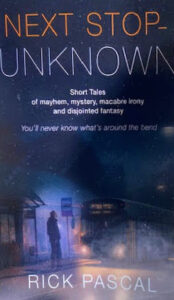This is such an abstract subject, I am not sure where and how I want to start. In the previous COSMOS article, we agreed that the death of a star will reveal the beginning of a new star. So, hurray let’s start understanding how a neutron star is formed from the death of a glowing star. The final stage of the transition of life to death for an unfathomable stellar object.
Thousands of years back, the skygazers and astronomers had experienced the death sequence of a star, and modern-day astronomy named it – a supernova – like a dying candle glows brighter before it goes completely dark. In early AD India and the Chinese recorded a new star among the known stars, but it disappeared from the eyes in a few months (astronomical light flicker). Modern telescope proves this being the earliest explosion of a supernova.
Gravitational wave detectors detected a neutron star merger 130 million light years away. If you were visiting in 1 million B.C., you might have encountered an interstellar explosion to form a neutron star. There are billions of neutron stars in our Milky Way galaxy. We have to believe these findings before continuing to the main topic which is how a neutron star forms from the death of a lively star.
We feel joy, when a mother comes home with a cute newborn baby, as the year passes baby learns more and becomes a big person from nutrition and energy intake, the time comes when food and water intake stops, and finally, a day of mourn comes upon his death. This is pretty normal.
Similarly, a microscopic living creature is born and dies. The creation (birth) and annihilation (death) process for the tiniest object (inanimate) is laboratory tested by scientists. A laboratory can create almost fundamental particles e.g., quarks, leptons, and bosons using varying energies. Physics proved disappearing (death) particles with the release of energy. Particle Creation and Decay – EWT – Energy Wave Theory clearly explains. So we can fairly assure ourselves that similar life and death are common phenomena of all large objects like a star, even the universe.
After a baby star is born – from the accumulated gravitational energy field and leftover gases like hydrogen in space, time passes gravity pushes more and more debris and space dust (nutrients) and takes the maturity process (childhood, boyhood, and adulthood) of the star for billions of years fusing hydrogen and constant forming of heavier particles and releasing energy outward. This fusing process goes on happily and the star is glowing and emitting its invincible power to nature. But it can’t defy nature’s role of destruction.
Star lives on an astronomical cosmic year happily as a balance exists between gravity and the fusion process. Finally, gravity wins over the fusion process and leaves the core with iron ash – so no more fusion.
Star is now very sick, lord Shib is dancing watching, and waiting for the final death of the powerful invincible star, as unthinkable gravitational pressure pushes the remains of the giant star. The core gets hotter and hotter. Fundamental atomic particles like electrons and protons are compressed and form neutrons. The core is hardened to enormous mysterious nuclear objects. An implosion causes the entire energy to escape producing a violent shock wave outward. Finally, the star dies. The astronomer names it supernova.
What remains of the star is a neutron star, made of dense nuclear objects. Humans probably will not know its true mass structure. But we can monitor the sky, and analyze the condition when a neutron star forms it swirls the space at extreme speed. Its magnetic field creates pulses of radio waves. These extreme high-frequency radio waves are detected by us and this is the existence of neutron stars.
Astronomers keep finding stars of different sizes. The stages of death of stars were known by people in the early days, with powerful telescopes and constant monitoring of the sky, astronomers gave us their findings of the stages for the death of stars. The death scenario of a Star the size of our sun goes to a giant red star as a red giant is mainly composed of hydrogen, with an inert core of helium, carbon, oxygen, and neon or silicon, it explodes. it sheds the outer layer. Cools down and then becomes a white dwarf.

A magnetar is a type of neutron star with an extremely powerful magnetic field.
Neutron stars are detected by their electromagnetic radiation observed with pulses called pulsars, (the heartbeat of a neutron star).
A star does not die, its matter and energy are transforming into different forms, nature can’t hide from us, it’s past in times even billions of years ago anymore. Are we coming close to knowing how the universe was born? NOPE.
Rebirth – Our death seems like an on/off switch, but I believe it is just transforming, we peel off our present shell and wait for the right time to come back and the cycle will repeat.
Two very friendly neutron stars dancing together for billions of years and their love is the inception point of a new star. This will be the subject of discussion of the birth of a star.
https://www.quantamagazine.org/neutron-star-collision-shakes-space-time-and-lights-up-the-sky-20171016/
https://www.space.com/neutron-stars-collision-dark-matter-standard-model
Disclaimer :
My simplified understanding only.
Many videos and writeups on this subject. Please google them and learn the real theory behind stars, the universe, etc.
https://www.schoolsobservatory.org/learn/astro/stars/cycle
















Debu, Very well written. Even I, with a minimum knowledge of the cosmos, could understand the vastness of the universe. Our beautiful world, it seems, will die like the other stars. Thank you.
Comment by Amit Chatterjee — August 19, 2024 @ 9:48 pm